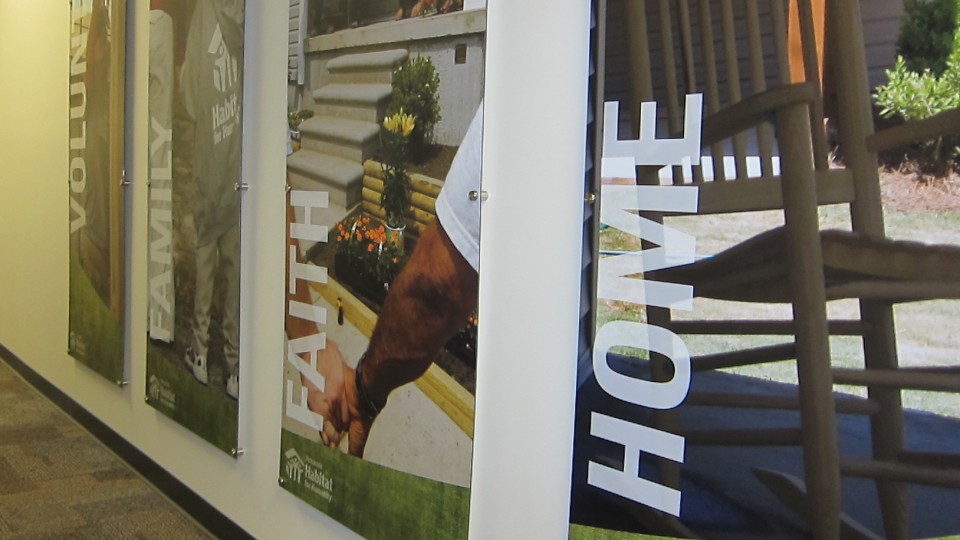Branching out from building homes
- August 3, 2014
- / Shannon Nickinson
- / community-dashboard

Habitat For Humanity is into more than building homes.
The history of the Pensacola chapter of that group -- which builds single-family homes for eligible families and requires those owners to put “sweat equity” into the construction of a home -- has been focused for more than 30 years on homebuilding.
But lately, they’ve been doing some things a little differently.
The Pensacola Habitat chapter has shifted some of its resources into a Neighborhood Revitalization Initiative. It aims to help coordinate relatively small repairs to existing housing stock.
It is an effort that allows Tim Evans and his team at Habitat to connect people who need a little help fixing up their homes with groups or agencies that have a body of willing volunteers to do the work.
Previously, Evans said, such efforts weren’t well organized overall.
 Say, for example, “an elderly homeowner has an issue with their roof,” Evans said. “They could call the county office, who will put them on the back end of a 300-person waiting list to get any kind support.
Say, for example, “an elderly homeowner has an issue with their roof,” Evans said. “They could call the county office, who will put them on the back end of a 300-person waiting list to get any kind support.
“Which feels like, “Thank you for calling, we can’t do anything about that.”
Evans said both city and county housing officials share that waiting list for repairs with Habitat, which, with the Neighborhood Revitalization effort, can start whittling some folks off that list.
That’s what they call a win-win.
The efforts have seen good initial success in the Eastside neighborhood and in Cantonment, where the Cantonment Improvement Committee took the lead on small rehab projects.
Committee president Josh Womack said some of the projects they have done in Cantonment around landscaping at a park and some painting and light rehab work to a home drew the eye of Habitat.
“Habitat had these surveys they had to do downtown and they said it takes 3 or 4 months to do those and we did it in four hours,” Womack said. “We did an interior survey of homes. Some homes need tearing down but some just need work.”
Michael Riley, committee member, describes the pairing between his group and Habitat as “just like matching peanut butter and chocolate together.” And they plan future projects under the partnership.
Partnerships like that are a natural extension of Habitat’s overall ethos of helping people become involved in bettering their own station in life. This just writes that large across a whole neighborhood.
“That’s where our community development work is going,” Evans said. “Developing within the neighborhoods the commitment to sustain improvements.”
In the past three years or so, Evans said the Pensacola chapter has built 350 homes.
That, he says, doesn’t even scratch the surface of the need for affordable housing.
Having “affordable housing” Evans said, means you don’t spend more than 30 percent of your monthly income on housing.
“So many people are “cost burdened” on their housing, which means out of their monthly income they will be paying 50, 60, and 70 percent of their monthly income just to have secured housing,” he said.
Focusing a little more effort on making the existing housing stock -- replete with 30-, 40-, or 50-year-old homes that may be owned outright but are in disrepair -- safe and habitable for years to come also is a way to increase the area’s inventory of affordable housing.
“It also helps preserve the character of the city and its neighborhoods,” said Peggy Fowler, who leads Habitat’s revitalization effort.
[progresspromise]
 CivicCon launches with a look at good growth in cities
CivicCon launches with a look at good growth in cities
 Building stronger brains one baby, one parent at a time
Building stronger brains one baby, one parent at a time
 SCI debuts commercial on Early Learning City
SCI debuts commercial on Early Learning City
 Entrecon: World class speakers and an opportunity to sharpen skills
Entrecon: World class speakers and an opportunity to sharpen skills
 PYP Quality of Life survey 2017
PYP Quality of Life survey 2017
 EntreCon Pensacola 2016: A look back
EntreCon Pensacola 2016: A look back
 Leadership tip: getting better employee takeaways
Leadership tip: getting better employee takeaways
 Leadership tip: be interested instead of interesting
Leadership tip: be interested instead of interesting
 Leadership tip: delivering difficult messages
Leadership tip: delivering difficult messages
 Brain Bags boost Arc, Early Childhood Court programs
Brain Bags boost Arc, Early Childhood Court programs